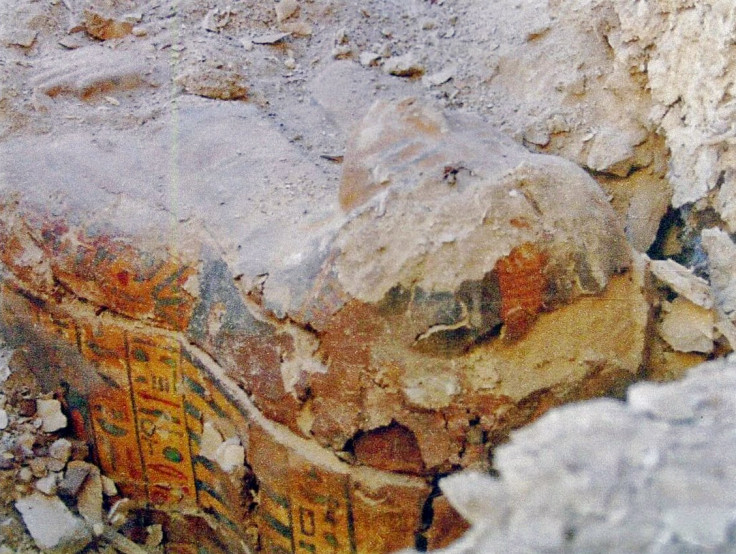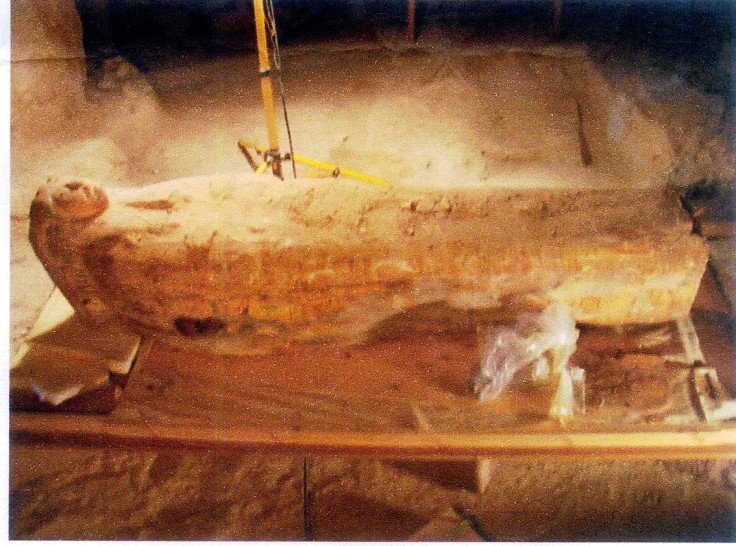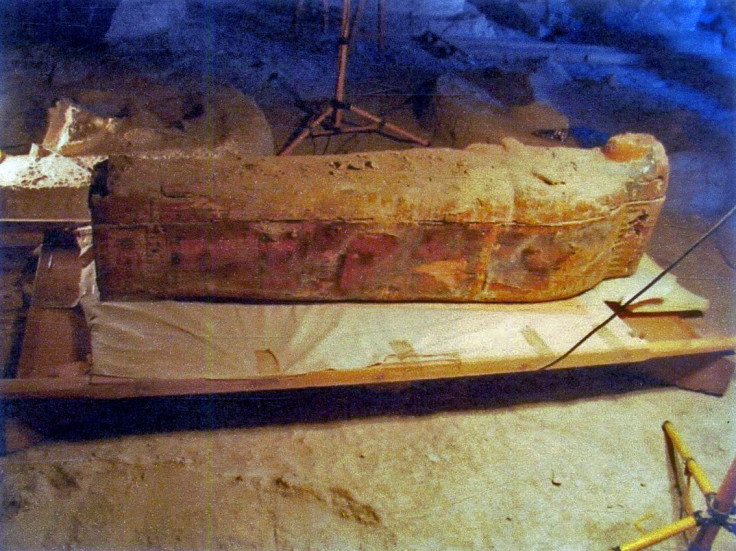Ancient Egypt: Mummy of Amun temple singer unearthed near Amenhotep Huy's tomb

Spanish archaeologists restoring the tomb of Amenhotep Huy (TT28) in the Bahariya Oasis on Luxor's west bank in Egypt have discovered the sarcophagus of a singer of the god Amun that was buried there at least 200 years after the original tomb was created.
According to Luxor Times, the sarcophagus is intact and well-preserved, and inside the coffin is a mummy wrapped in linen and its face is covered with a funerary mask. The mummy, whose name is unknown, also wears a wig topped by a crown of flowers, and a religious necklace lies on its chest.
The coffin was carved from wood and is covered in plaster, on which hieroglyphs and scenes are engraved depicting several Egyptian gods including Anubis, Osiris, Isis, Thoth and the four sons of Horus.
A singer of Amun

While the name of the mummy is not yet known, preliminary studies of the hieroglyphs inscribed on the sarcophagus claim that it holds a "Singer of Amun".

Abdel Hakim Karrar, the antiquities director general for Upper Egypt said: "The wooden coffin is plaster with gypsum and measures 181cm X 48cm X 50cm. The mummy inside is wrapped and the arms crossed underneath. The face details are carefully patterned.
He added that the "hieroglyphic inscription is being studied to know more about the deceased."
The coffin dates back to the 21<sup>st Dynasty, between 1069–664 BC, which is part of the Third Intermediate Period of Ancient Egypt.
This period is at least 200 years after the time of Amenhotep Huy, who was a vizier during the reign of Amenhotep III in the 18<sup>th Dynasty (1543–1292 BC), which was part of the New Kingdom period.
After the death of Pharaoh Ramses XI ended the New Kingdom in 1070 BC, the Third Intermediate Period arose where pharaohs began losing their power over the country and the High Priests of Amun at the city of Thebes effectively ruled Upper and Middle Egypt in all but name.
Social hierarchy in Ancient Egypt
Priestesses of Amun would also similarly have had high rank in Egyptian society during this period, and there were different ranks of priestesses in the temple of Amun in Karnak.
A god's wife of Amun would have been the highest rank of priestess and this level of priestess would have remained celibate through her life.
She would have been an unmarried daughter of either a king or of a high priest of Amun, and she would have been symbolically given in marriage to Amun by her father.

It is believed that the next rank down for priestesses were the ritual temple singers, who were sometimes also attendants to the god's wives of Amun.
This would mean that newly-discovered mummy might have held a high rank in society.
Being a temple singer was a part-time position, and numerous mummies of temple singers have been found with rich funerary goods and solid gold coffins, buried almost as if they were princesses, such as Meresamun and Henutmehyt (on show at the British Museum in London).
Mummies of temple singers have also been found buried not far from the tomb chapels of the god's wives of Amun from the 25<sup>th and 26<sup>th dynasty at Medinet Habu, the mortuary temple of Ramses III.
© Copyright IBTimes 2025. All rights reserved.




















